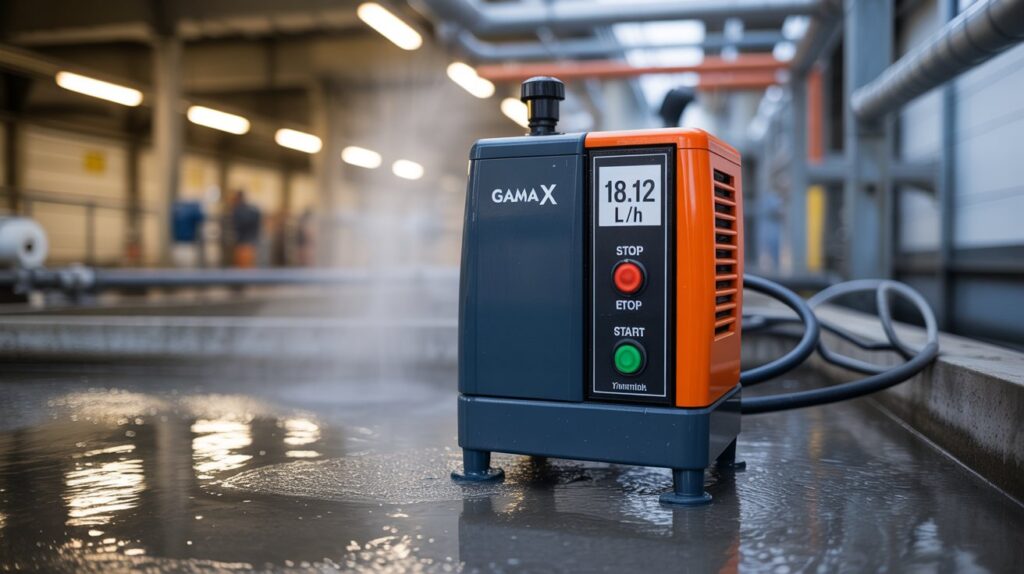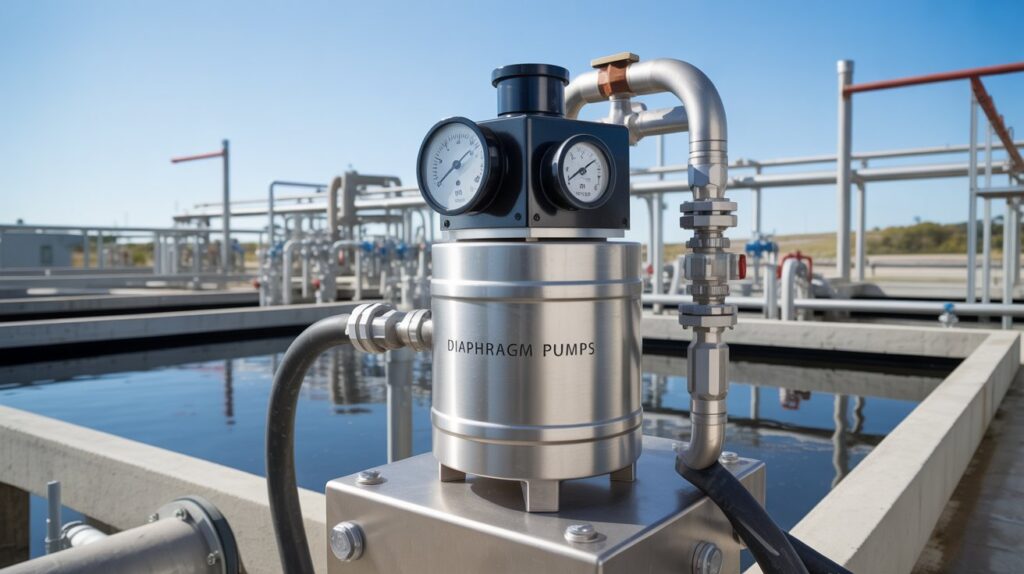Have you ever thought about the intricate processes that go into treating wastewater? One crucial aspect of wastewater treatment involves the use of chemical dosing, a method where specific chemicals are injected into the system to achieve desired neutralization or separation effects. This process ensures that wastewater is treated effectively and environmentally safe before being released back into the ecosystem. But how does chemical dosing happen, and what are the common pumps used for this purpose? Let’s explore this fascinating topic together.
Understanding Chemical Dosing in Wastewater Applications
Wastewater treatment involves several stages, each aiming to reduce contaminants and improve water quality. Chemical dosing is one of the pivotal processes in these stages. This method involves precise injection of chemicals into wastewater, targeting specific pollutants and facilitating their removal.
Why Is Chemical Dosing Important?
Chemical dosing is essential because it aids in adjusting pH levels, breaking down organic waste, controlling odors, and removing specific contaminants that physical filtration alone cannot handle. It enhances the efficiency of the wastewater treatment process, making sure the end product meets environmental standards.
The Role of Pumps in Chemical Dosing
Pumps are integral to the chemical dosing process. They ensure accurate and consistent delivery of chemicals into the wastewater system. The right pump can make a significant difference in both efficiency and reliability. Selecting the appropriate pump requires consideration of factors such as chemical properties, flow rate, pressure requirements, and the specific application needs.
Types of Pumps Used for Chemical Dosing
There are several types of pumps commonly used for chemical dosing in wastewater applications. Each has its unique design and functionality, catering to various treatment requirements. Let’s discuss some of these pump types and explore their applications.
Diaphragm Pumps
Diaphragm pumps are commonly used in chemical dosing due to their versatility and reliability. They use a flexible diaphragm that moves back and forth to create a pumping action, allowing precise control over the flow and volume of chemicals being dosed.
Advantages:
- Precision: They offer high accuracy in chemical dosing, which is crucial for maintaining the effectiveness of the treatment process.
- Versatility: Suitable for handling a wide range of chemical viscosities and properties.
- Leak Prevention: The sealed design minimizes the risk of leakage, which is essential when handling hazardous or corrosive chemicals.
Peristaltic Pumps
Peristaltic pumps, also known as tube or hose pumps, operate by compressing a flexible tube through which the chemical solution passes. As the tube returns to its original shape, it creates a vacuum that draws in more solution.
Advantages:
- Gentle Pumping Action: Ideal for shear-sensitive liquids.
- Simple Maintenance: Tubes or hoses can be replaced easily, reducing downtime.
- No Contamination Risk: The chemical solution is contained within the tube, minimizing the risk of contamination.
Gear Pumps
Gear pumps use meshing gears to pump fluid by displacement. They are known for their smooth and continuous flow, making them suitable for chemical dosing in wastewater treatment applications.
Advantages:
- High Pressure: Can handle high viscosity fluids efficiently.
- Durability: Rugged design suitable for long-term use.
- Consistent Flow: Provides a steady flow, essential for precise chemical dosing.
Lobe Pumps
Lobe pumps are a type of positive displacement pump where the pumping chamber is formed by two or more lobed rotors. These rotors create cavities as they rotate, drawing fluid in and then compressing it through the discharge side.
Advantages:
- Non-Contacting Rotors: Little to no wear, reducing maintenance needs.
- Wide Range of Viscosities: Capable of handling both thick and thin chemicals.
- Flows Large Particles: The design allows the passage of particulates without damage.

Factors to Consider When Selecting a Pump
Choosing the right pump for chemical dosing in wastewater applications is not just about picking one off the shelf. Several factors must be considered to ensure optimal performance and efficiency.
Chemical Compatibility
It’s vital to consider the chemical properties and potential corrosiveness when selecting a pump. Materials used in the pump should be compatible with the chemicals it will handle to prevent contamination or damage.
Flow Rate and Pressure Requirements
Understanding the required flow rate and pressure for your specific application is crucial. The pump should be capable of delivering the correct amount of chemical at the right pressure to facilitate effective treatment.
Maintenance and Reliability
Considering the ease of maintenance and overall reliability of a pump can save time and resources in the long run. Pumps with simple designs and fewer moving parts tend to require less maintenance and experience fewer breakdowns.
Cost Considerations
While initial costs are important, they should be weighed against long-term efficiency and maintenance needs. A pump that may initially be more expensive could prove economical over time due to lower maintenance and operating costs.
Innovations and Trends in Chemical Dosing Pumps
The industrial sector is continually evolving, and so are the technologies used. In recent years, there have been notable innovations and emerging trends in chemical dosing pumps used for wastewater treatment.
Smart Pumping Systems
The advent of digital technologies has given rise to smart pumping systems that offer enhanced monitoring and control capabilities. Such systems allow operators to adjust dosing rates remotely, yielding more precise treatment outcomes.
Energy-efficient Pumps
With increasing focus on sustainability, energy-efficient pumps are becoming increasingly popular. These pumps are designed to minimize energy consumption, contributing to lower operational costs and a smaller carbon footprint.
Advanced Materials
Innovation in materials technology has led to the development of pumps capable of handling more corrosive and high-temperature chemicals. These advancements extend the life of pumps and reduce the frequency of maintenance.

Case Study: Effective Pump Selection in Chemical Dosing
Let’s consider a real-world situation where choosing the right pump made a significant difference in wastewater treatment outcomes. A municipal wastewater treatment plant faced challenges with their existing chemical dosing system, which frequently required maintenance due to leakage and insufficient dosing precision.
Challenge Identification
The pump used was insufficiently handling the viscosity variations of the dosing chemical, leading to frequent blockages. Furthermore, the pumps were not adequately sealed, resulting in chemical leaks that were both costly and hazardous.
Solution Implementation
The plant opted to replace their existing system with diaphragm pumps, known for their high precision and sealed design. The choice of the new pump ensured that chemicals were dosed accurately, minimizing leakage and reducing maintenance needs.
Results
The new pumps decreased chemical usage by 15% due to better precision, resulting in cost savings. Maintenance frequency and associated costs were halved. Additionally, risk of hazardous chemical leaks was virtually eliminated, enhancing safety for plant operators.
Looking Towards the Future
The future of chemical dosing in wastewater applications looks promising with ongoing technological advancements. As the industry continues to evolve, focusing on sustainability and efficiency will be key. Continued research and development in pump technology mean you can expect more reliable, efficient, and environmentally friendly solutions on the horizon.
Meeting Environmental Standards
As environmental regulations become stricter, the demand for more precise and efficient chemical dosing pumps will increase. Emerging technologies will focus on ensuring that treated wastewater meets and even exceeds these rigorous standards.
Automating Processes
Automation is set to play a larger role in chemical dosing systems, incorporating artificial intelligence to predict maintenance needs, optimize dosing schedules, and adjust to real-time changes in wastewater composition and flow.
Conclusion
Understanding the various types of pumps used in chemical dosing, along with their respective advantages and limitations, is crucial for effective wastewater treatment. By carefully considering factors like chemical compatibility, flow rate, pressure, and maintenance needs, you can select the most appropriate pump for your application. As technology progresses, keeping abreast of new developments and innovations will ensure that your wastewater treatment system remains effective, efficient, and environmentally friendly. The journey towards cleaner water starts with the right pump.